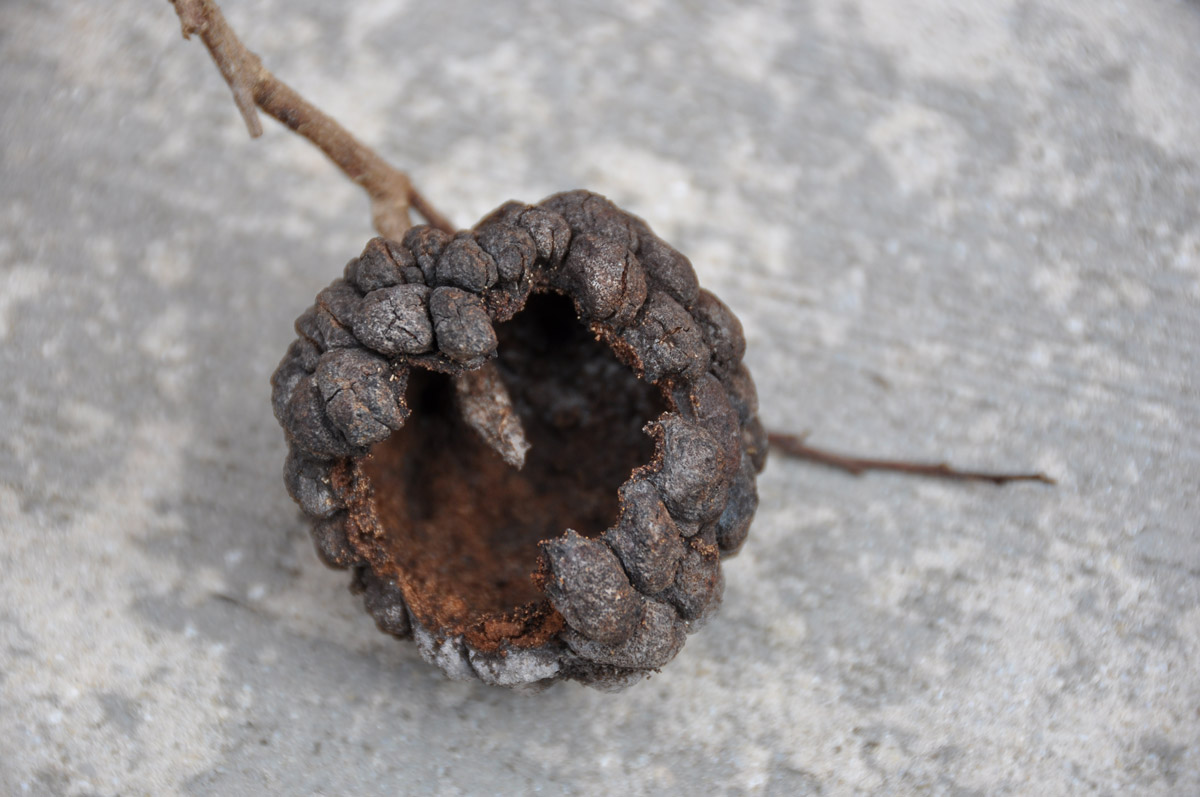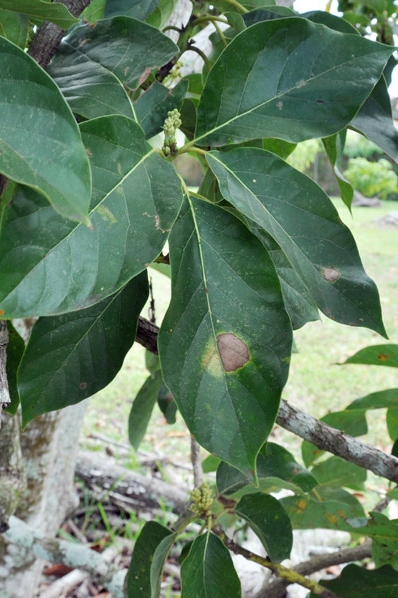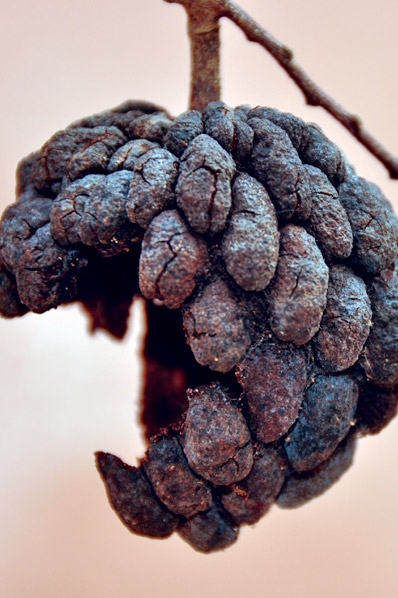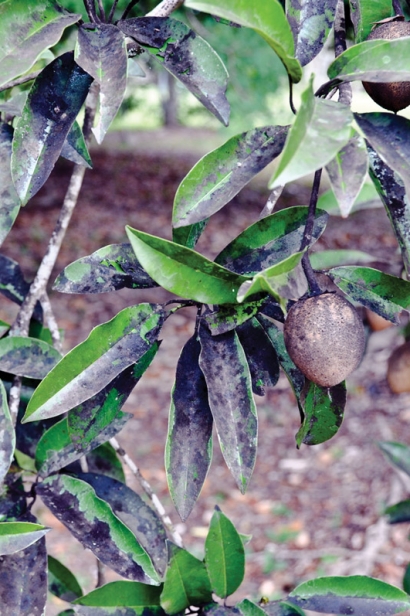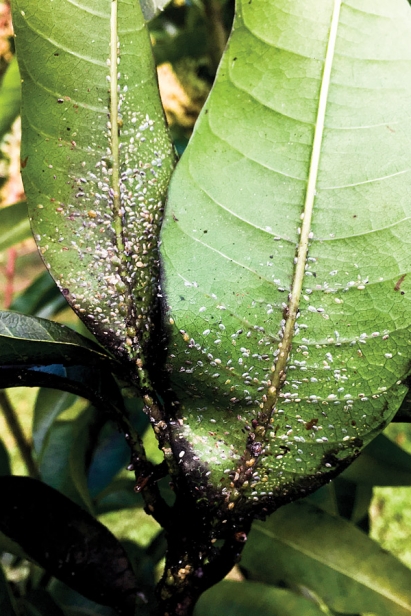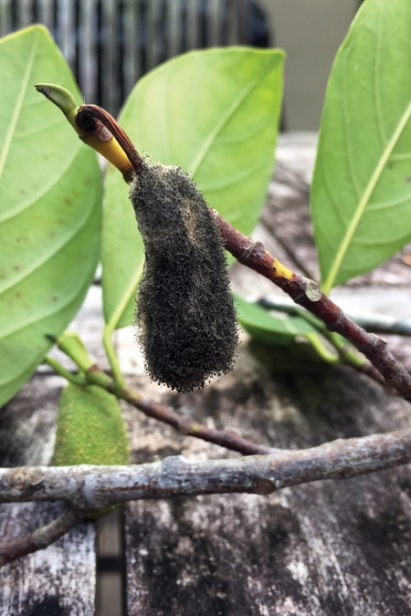Common Tropical Fruit Tree Problems
Many types of tropical fruit trees can be grown with ease in South Florida, but even the hardiest trees sometimes have issues that can affect their growth. These are usually fairly easy to handle.
Problem: Severe avocado leaf damage
Diagnosis: The spots shown here are very typical on avocados just before they bloom in the winter and early spring. They’re caused by avocado lace bugs feeding under the leaves.
Solution: The trees will soon drop all of their lower leaves, so control of this pest is unnecessary.
Problem: Mummified sugar apple
Diagnosis: Small fruit are attacked by the annona seed borer that lay eggs inside small fruit. The opening in the fruit allows the fruit to in turn be attacked by fungi and become mummified.
Solution: Remove all damaged fruit, bag and dispose of it. Do not leave the fruit under the tree – the wasp’s life cycle needs to be broken. Small fruit may also be bagged to prevent the annona seed borer from laying eggs in the fruit.
Problem: Leaf damage on lychees and longans
Diagnosis: The Sri Lankan weevil chews and damages the leaves of lychee, longan and other tropical fruit trees. The weevil feeds on the leaves and then lays eggs in the ground where the pupa can damage roots.
Solution: This pest is not a big problem for large trees, but it can kill young trees. The Sri Lankan weevil will immediately drop to the ground if the tree is disturbed, so insecticides are rarely effective. Place a dark sheet under the plant and then gently shake the plant. Hand pick the insects from the sheet and dispose of them.
Problem: Black soot on leaves of fruit tree.
Diagnosis: This is sooty mold: a fungus caused by the feeding of sucking and piercing insects like scale, mealybug or aphids.
Solution: To get rid of sooty mold, you do not treat the fungus, you treat the insect. Usually natural predators will take care of the pest over time, but you can use horticultural oil or soap if you don’t want to wait for the predators to do their job.
Problem: Small flat or bumpy insects on mango leaves
Diagnosis: These scale insects can attack mangos as well as other tropical fruits. Scale can look like the ones pictured here, or take other forms and colors. They feed by sucking on the plant and often drip honey dew, which leads to the formation of sooty mold.
Solution: If left alone, natural predators will find and attack this type of insect. If you cannot wait for nature to take its course, use horticultural oil or soap. Be careful not to burn your plant by spraying oil during a sunny part of the day.
Problem: Flowers on jackfruit turn black and fall off and no fruit appears
Diagnosis: Jackfruit trees have separate male and female flowers on the same tree and only the female flowers will set fruit. Young jackfruit trees have only male blooms for the first few years, so the flowers appear and then turn black and wither away.
Solution: Patience! Because jackfruit are so large, the tree needs to get up to size before it can hold fruit. This can take three to four years.
Questions about your tropical fruit trees? Call a UF/IFAS extension agent at 305-248-3311. Homeowners: Adrian Hunsberger (ext. 236); commercial tropical fruit growers: Jeff Wasielewski (ext. 227); commercial vegetable growers: Qingren Wang (ext. 234).


